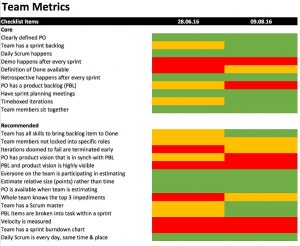As a business, your ability to retain the market’s competitive edge requires you to balance the necessity and difficulty for new product development. It is where the new product development process comes into play. It helps you test the new product’s sustainability for the market needs and its economic usefulness.
Here are some of the ways using which you can help your business with the benefits of new product development:
1. Save Money
According to a report by Fundera, it is estimated that around 20% of the new businesses fail in the first year. This is due to factors such as improper market research, incompetence, and economically viable business models. The new product development process is designed to eliminate these risks from your business by testing the potential of your idea and the current market situation.
Identifying the effectiveness of the new products in the NPD process before they get released in the market enables you to adapt your idea according to the market needs or withdraw it entirely to save your time and money. Having this information with you can help as a secret weapon to launch a disastrous business idea and keep your business financially stable for a long time.
2. Innovation and Idea Generation
The new product development process is the promoter and driver of new ideas for your business. Having a framework to test your new product’s viability will naturally lead to its implementation. Developing and nurturing a culture of innovation is crucial to the commercial growth of the business and its staff.
3. Strengthen and Formalize the Concept Development Process
Just like a new business, you need to properly define your product concept at the beginning of the new product development life cycle. It must be done by considering the anticipated consumer, and hence you must describe the product in meaningful consumer terms.
The common steps to be followed are:
- A product concept is pitched to senior staff or stakeholders in the business.
- The macro idea is approved or shelved depending on its merit.
- If approved, the product is passed for development into the alternative product concepts, often branching out to target the different groups.
You can streamline your business by laying off these frameworks and boosting staff productivity. It is a natural step to consider before concept testing in the new product development process.
4. Concept Testing
The above-mentioned concept development process is best paired with the concept testing process. Once the idea is finalized, it is necessary to test it against the market condition and target it.
It is done by testing the target consumer by market research practices. It would consist of presenting a physical representation of the product to the consumer. The picture or the description of words is often sufficient, but the better results are observed from the authentic physical representation.
After presenting the concept to consumers, you can ask for responses and engage with them in the product discussion. The responses in this discussion are used as assets to improve the product and consumer experience.
5. Marketing Strategy
The new product development process can help with marketing strategies for your product. It is a natural course of action once your concept has been designed and tested. With the intel you collected in the development phase, you can turn this into a marketing strategy. This process is then simplified and accelerated. The three critical areas of your marketing strategy include:
- Identifying the target market and different ways to connect with them
- Analyzing the metrics such as product price, distribution method, first year’s marketing budget.
- Projected long-term sales and profit margins.
8 Best Practices for Your New Product Development Process
Most businesses repeatedly deliver successful products to the market even though all their specific approaches vary from each other. Following are some of the best practices to follow for the new product development process:
1. Identify the needs of the target audience.
2. Use the market research and consumer feedback for the product effectively.
3. Communicate across your company for more knowledgeable feedback and insights.
4. Make use of available frameworks for the new product development process. Never develop a new product without a system in place first.
5. Validate your product concept soon in the NPD cycle. For some products, it might include the “soft launch” in which you test the product in small parts before full-scale market release.
6. Invite your cross-functional team into the brainstorming and ideation stage. Great insights for your market can come from everywhere.
7. Set realistic development timelines
8. Concentrate on the ideas your company has both the resources and the expertise to execute.
Originally published here.
Business & Finance Articles on Business 2 Community(45)
Report Post



